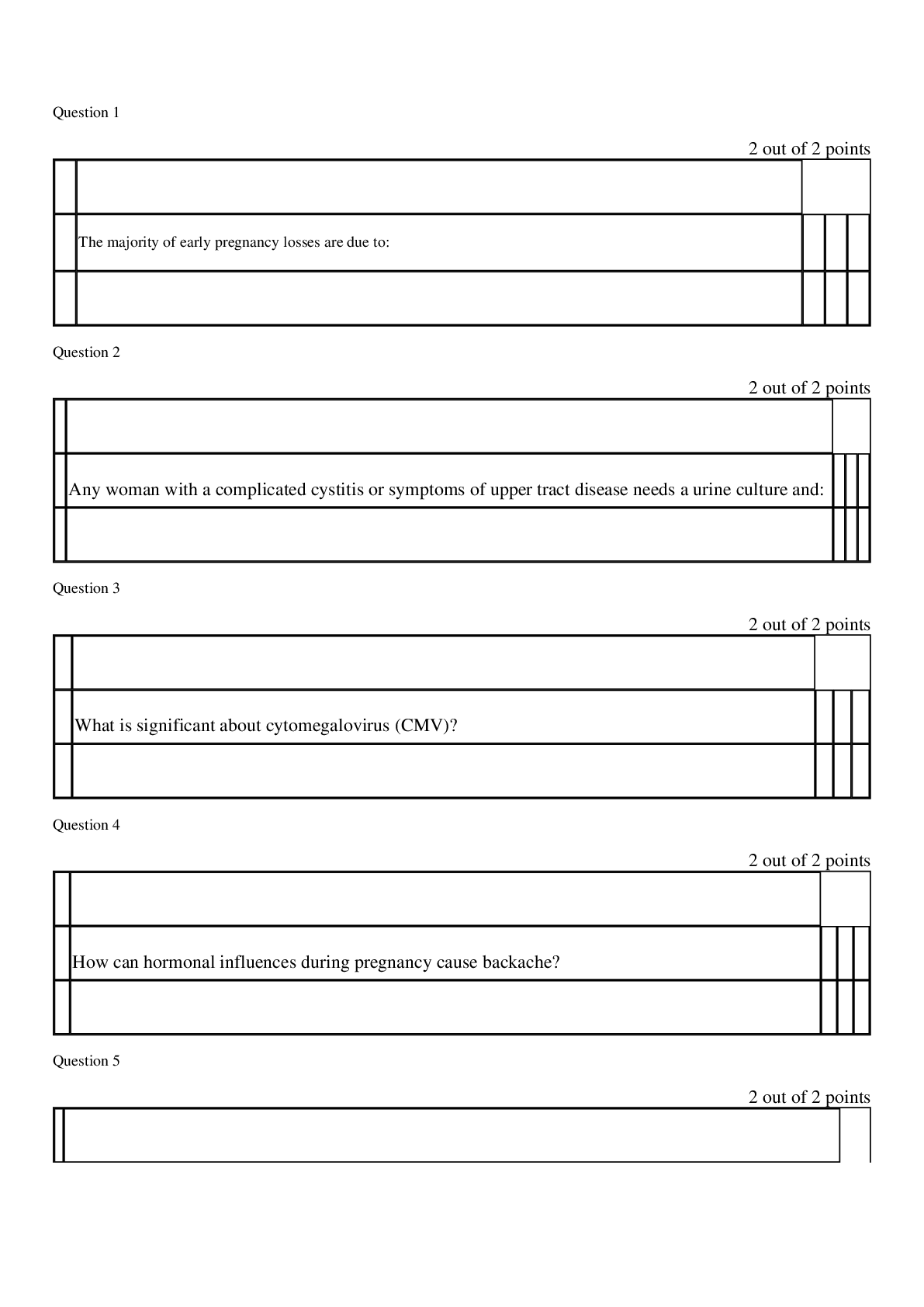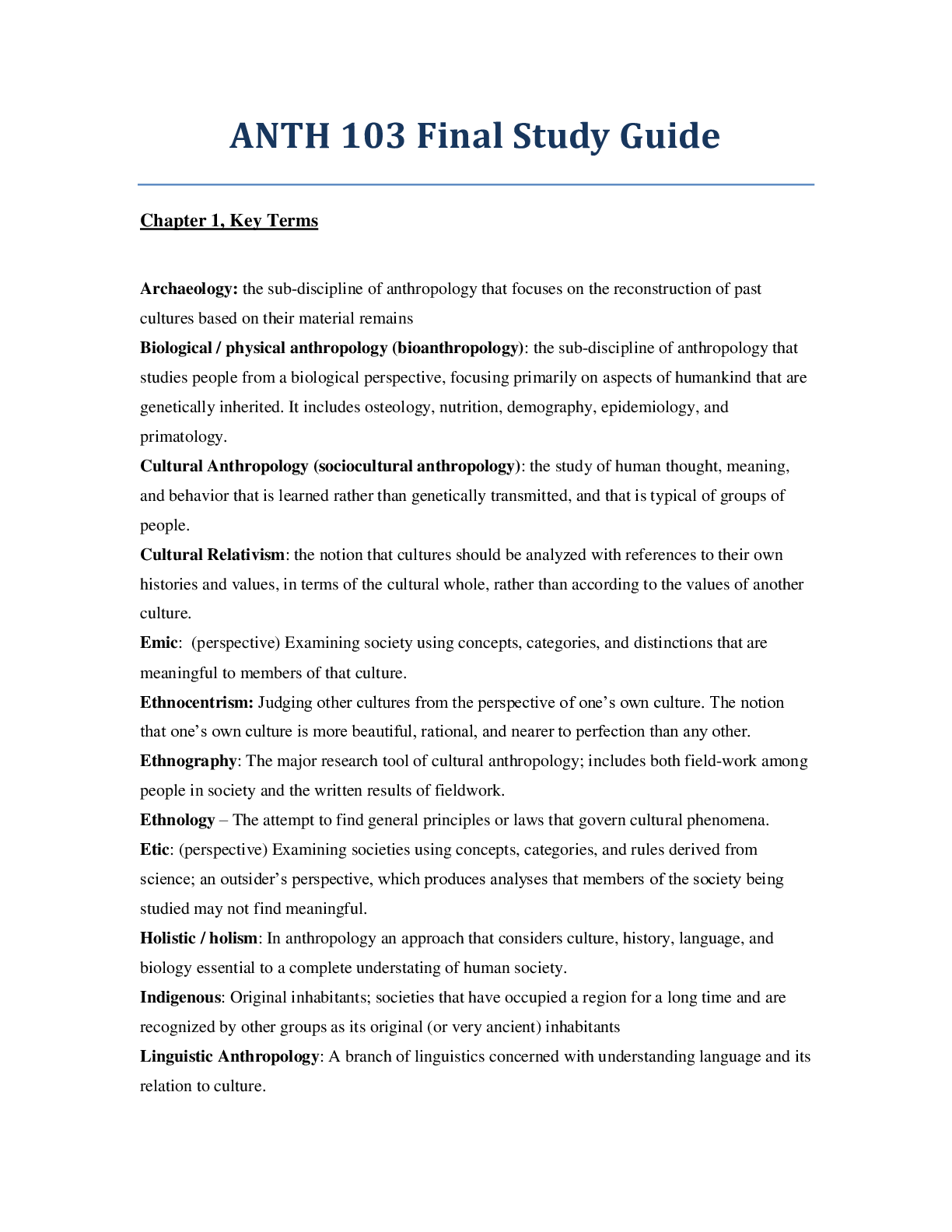Chemistry > STUDY GUIDE > University of Illinois, Urbana Champaign - CHEM 420 Exam 3 Answer Key. 100% VERIFIED. (All)
University of Illinois, Urbana Champaign - CHEM 420 Exam 3 Answer Key. 100% VERIFIED.
Document Content and Description Below
1. (12 points) For each comparison, circle the harsher ionization method. (4 points each) a. Chemical ionization (CI) or Electron Impact (EI) b. Chemical ionization (CI) or Matrix-assisted laser de... sorption (MALDI) c. Electrospray ionization (ESI) or Electron Impact (EI) 2. (8 points) What is the most fundamental difference between gas phase and desorption-based ionization methods? What limit does this place on species to which gas phase techniques can be applied? Name one example of each. (6 points for the differences between, 2 points for either of the listed limitations) Gas phase methods first require thermal volatilization before ionization (3 points) whereas desorption methods directly convert solid or liquid samples into gas phase ions (3 points). Gas phase techniques are limited to thermally stable compounds (bp less than 500oC) and masses less than 1000 Da (1 point for either thermally stable compounds or < 1000 Da). Gas phase: chemical ionization, EI (+1 point) Desorption: MALDI, ESI, Field desorption (+1 point) 3. (10 points) (a) The van Deemter equation is used to describe what in chromatography? (b) What are the 4 terms of the van Deemter equation and what do they represent? You do not need to list them in order Of the 4 terms, which term has the largest effect in gas chromatography? Why? (a) Van Deemter equation is used to describe the optimum velocity used to achieve maximum separation (anything about plate height or band broadening was generally accepted as well) (1 point) (b) (2 points for each term plus description) A : multipath term (or multiple flow paths) B/u : longitudinal diffusion CSu : stationary-phase mass transfer term CMu : mobile-phase mass transfer term (c) For GC, the B/u term has the largest effect because of the higher rates of diffusion in the gas phase. (1 points for largest in GC , 1 points for why) 4. (5 points) In the majority of our discussions of band broadening, we assumed Gaussian peak shapes. However, chromatographic peaks are sometimes distorted towards either shorter or longer retention times, and those effects are referred to as fronting and tailing, respectively. What is a common cause of fronting? What is the cause of tailing in gas-solid chromatography? Which one is easier to fix? (2 points for each cause) Fronting is often due to overloading the column, which leads to non-equilibrium conditions Tailing often results from non-linear or irreversible adsorption. [Show More]
Last updated: 2 years ago
Preview 1 out of 6 pages

Buy this document to get the full access instantly
Instant Download Access after purchase
Buy NowInstant download
We Accept:

Reviews( 0 )
$12.00
Can't find what you want? Try our AI powered Search
Document information
Connected school, study & course
About the document
Uploaded On
Dec 07, 2020
Number of pages
6
Written in
Additional information
This document has been written for:
Uploaded
Dec 07, 2020
Downloads
0
Views
68






















